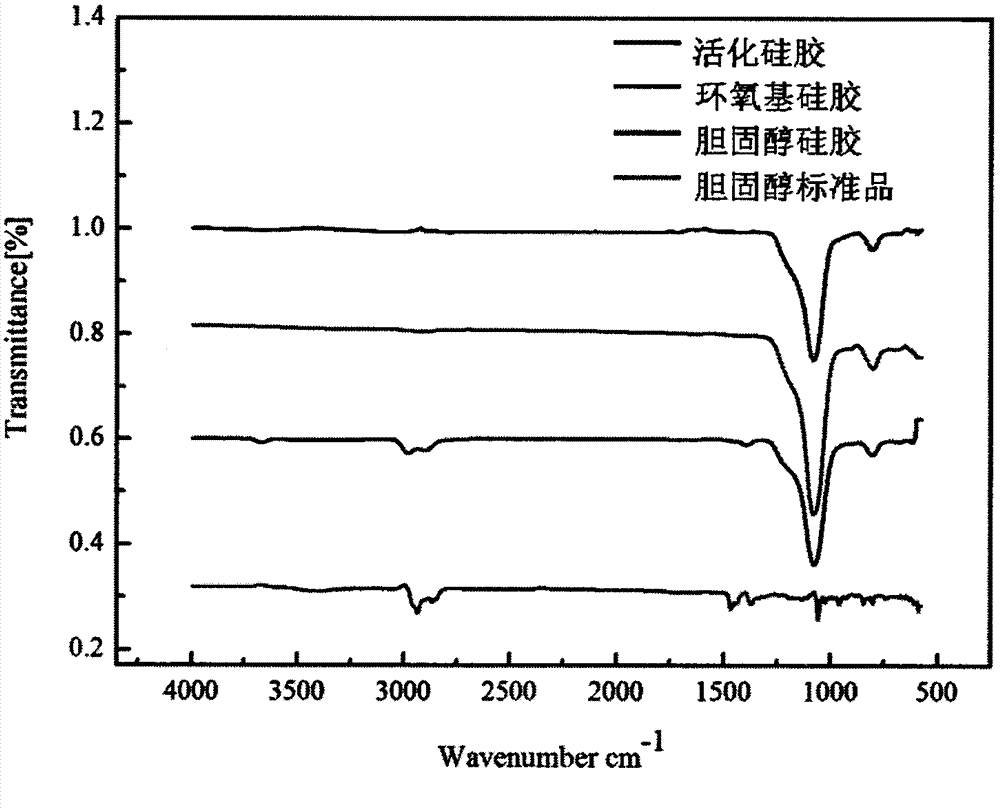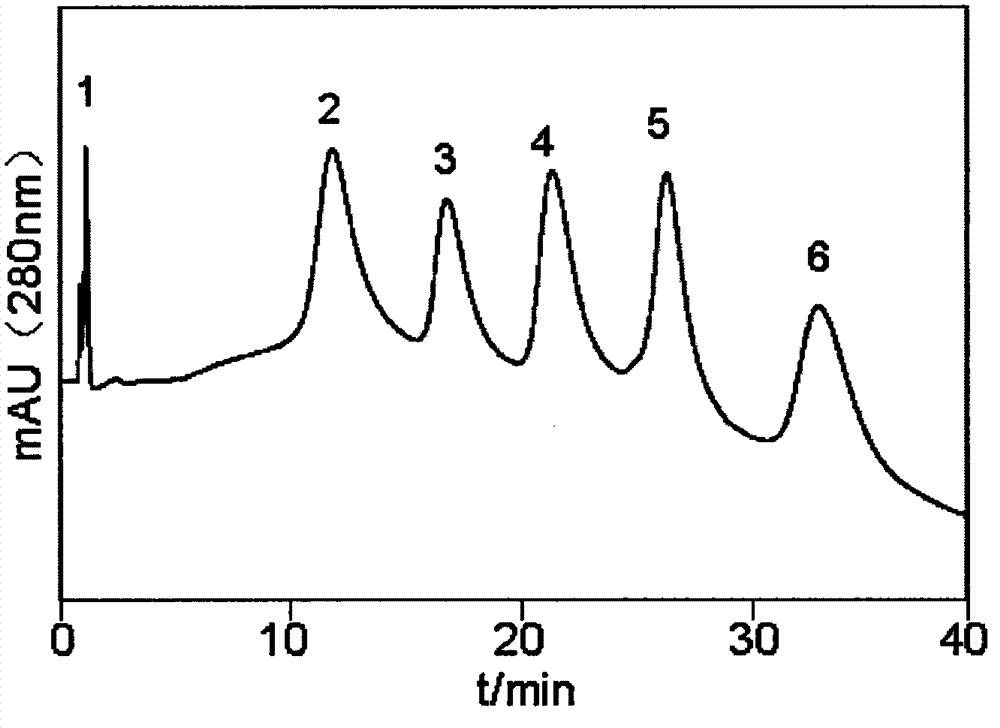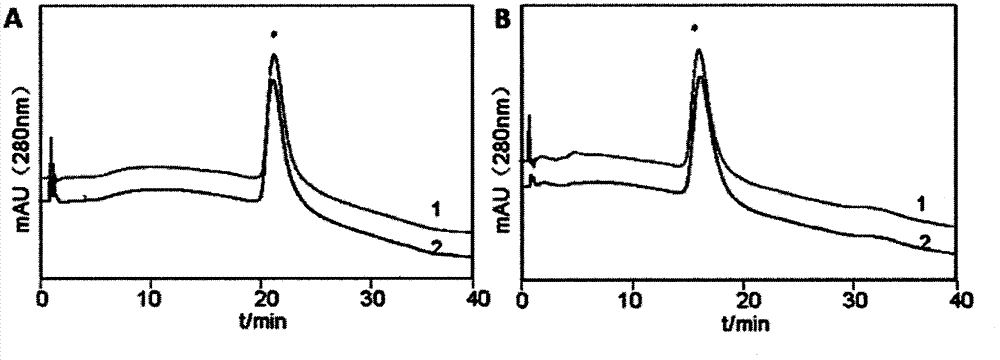Preparation and application of high performance hydrophobic interaction chromatography packing material taking cholesterol as aglucon
A technology of hydrophobic interaction and chromatography packing, which is applied in the field of preparation and application of high-efficiency hydrophobic interaction chromatography packing with cholesterol as ligand, which can solve the problem that denatured protein is easy to penetrate directly, denatured protein is difficult to elute, and protein renaturation efficiency is low. and other problems, to achieve the effect of simple and mature preparation process, easy control and scale-up, and good biocompatibility
- Summary
- Abstract
- Description
- Claims
- Application Information
AI Technical Summary
Problems solved by technology
Method used
Image
Examples
Embodiment 1
[0039] (1) Preparation of High Efficiency Hydrophobic Interaction Chromatography Packing
[0040] Using high-purity spherical silica gel as a blank matrix, first carry out acid treatment, reflux the silica gel with 20% hydrochloric acid at 120°C for 3-4 hours, cool, wash repeatedly with distilled water until the solution is neutral, and vacuum dry overnight. Then the acid-treated silica gel is activated with γ-glycidyloxypropyltrimethoxysilane (TM-560), that is, in a 50mmol / L sodium acetate solution, an appropriate amount of TM-560 is slowly added dropwise at 90°C After the silica gel was reacted for 4 hours, it was washed with 50 mmol / L sodium acetate solution, methanol and water in sequence, and dried in vacuum. The reaction between cholesterol and epoxidized silica gel was carried out in anhydrous ether and dry 1,4-dioxane solution, and 2.0 mL of boron trifluoride ether was added as a catalyst, and the reaction was carried out at 5 ° C for 4 h, and then with Wash with ethe...
Embodiment 2
[0046] Similar to Example 1, the difference is that step (3) refolds denatured lysozyme and simultaneously purifies it with high-efficiency hydrophobic interaction chromatography filler, and its mobile phase A (equilibrium buffer) used is 3.0mol / L (NH 4 ) 2 SO 4 , 50.0mmol / L KH 2 PO 4 , 3.0mol / L Urea, pH7.0, mobile phase B (refolding buffer) is 50.0mmol / L KH 2 PO 4 , 3.0mol / L Urea, pH7.0 for refolding elution, the elution method is a linear gradient of 0-100% B for 30min, and prolonging 100%B for 10min, the flow rate is 1ml / min, and the chromatographic peaks are collected, see image 3 b.
Embodiment 3
[0048] Similar to Example 1, the difference is that step (3) refolds and simultaneously purifies recombinant human tyrosine kinase ligand (rhFL) with high-efficiency hydrophobic interaction chromatography filler, and the inclusion body is dissolved in 8.0mol / L Urea, 1mmol / L EDTA, 50.0mmol / L DDT, pH 8.0 buffer solution to obtain denatured extract of rhFL inclusion body. Use mobile phase A (equilibrium buffer) as 3.0mol / L (NH 4 ) 2 SO 4 , 50.0mmol / L KH 2 PO 4 , 3.0mol / L Urea, pH7.0 balance, 250μL denatured extract was adsorbed and sampled, using 0-100% B (50.0mmol / L KH 2 PO 4 , 3.0mol / L Urea, pH7.0) linear gradient elution 30min, prolong 100%B 10min, flow rate is 1ml / min, collect chromatographic fraction, see Figure 4 .
PUM
 Login to View More
Login to View More Abstract
Description
Claims
Application Information
 Login to View More
Login to View More - R&D
- Intellectual Property
- Life Sciences
- Materials
- Tech Scout
- Unparalleled Data Quality
- Higher Quality Content
- 60% Fewer Hallucinations
Browse by: Latest US Patents, China's latest patents, Technical Efficacy Thesaurus, Application Domain, Technology Topic, Popular Technical Reports.
© 2025 PatSnap. All rights reserved.Legal|Privacy policy|Modern Slavery Act Transparency Statement|Sitemap|About US| Contact US: help@patsnap.com



